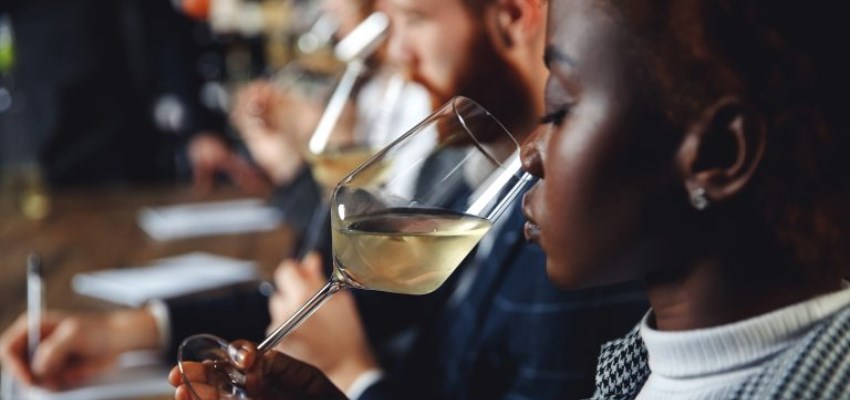
Thiols—more precisely, volatile thiols or volatile sulfur compounds - are an interesting and diverse group of aroma compounds. They are most associated with the tropical and citrus aromas in Sauvignon Blanc, though thiols are also responsible for flint and mineral aromas in certain classic wines, as well as unpleasant aromas like sewage and rotten cabbage that can make appearances in the glass.
While controversial aromas that are commonly associated with reduction, such as hydrogen sulfide (H2S), are volatile thiols, they function differently than varietal thiols, which originate in the grape. Just as monoterpenes are often associated with Muscat, tropical thiol compounds are most frequently associated with the Sauvignon Blanc grape. However, thiols are also important to the character of Riesling, Gewürztraminer, Sémillon, Pinot Gris, Pinot Blanc, and many others. Passionfruit, guava, grapefruit, and boxwood are characteristic aromas associated with numerous thiols.
The names of the thiols themselves are usually abbreviated, as they’re particularly cumbersome; some of the most common are 3SH for sulfanylhexan-1-ol, 3SHA for 3-sulfanylhexyl acetate, and 4MSPfor 4-methyl-4-sulfanylpentan-2-one. These names might surprise even those who are familiar with thiols; the International Union of Pure and Applied Chemistry has recently decided to use “sulfanyl” instead of “mercapto” in thiol nomenclature.
Thiols are present in red grapes and wines as well, but much less research has been done and their contribution isn’t entirely clear. The Australian Wine Research Institute article “Do Varietal Thiols Matter in Red Wine?” states that what would be perceptible levels of tropical fruit in whites, appear only to boost “red fruit” in some red wines.
But how does viticulture and vinification impact varietal thiols, and which compounds impact the perception of thiols in wine? SevenFifty Daily spoke with research scientists and winemakers to find out.
In the vineyard
There are myriad ways in which thiol concentration can be affected during the growing season. According to Marlize Bekker, Ph.D., the principal research scientist at the Australian Wine Research Institute, various studies have shown that heat shock and UV radiation treatments to grapes increase thiol precursor concentrations. This means that “leaf plucking is a simple way to increase thiol precursors in Sauvignon Blanc,” she says. Thiol precursor concentration peaks in grapes in a “semi-ripe stage” before maturity, says Avery Heelan in a 2015 Waterhouse Lab article, so picking earlier may result in higher concentrations.
For the Grenache rosé and Sauvignon Blanc at Simon Family Estate in Napa, California, winemaker Maayan Koschitzky works to get direct light on the grapes, but only early in the season. “We open some of the leaves early, and later on, when lateral shoots are pushing, we don’t remove them, as to create extra cover,” he says. For the rosé, Koschitzky feels this encourages “dominant aromas of grapefruit and other tropical fruit, but being careful not to create a wine that is one-dimensional.”
To read the full article, click HERE.